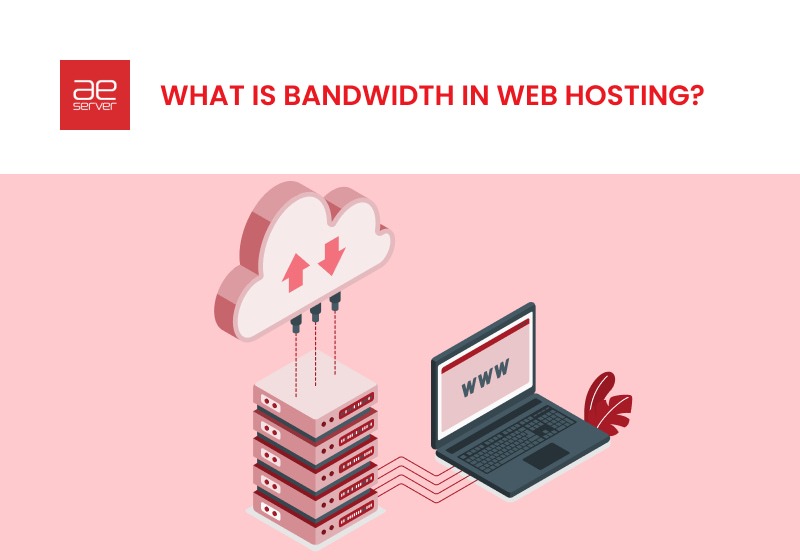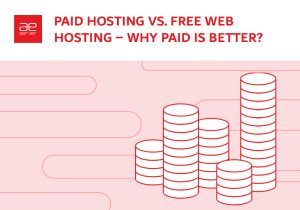When you want to launch a new website, you need two elements. First, a domain name. Second, a place to host your website content. You may often see “bandwidth” when purchasing web hosting space.
Bandwidth is the rate at which data is transmitted over a computer network. For example, picture a highway. Imagine that this highway has two lanes. In this case, only two cars can pass in it. The more lanes you have, the more cars can pass on the highway.
Now replace the cars with bits and the highway with fiber optics. As you know, fiber optic lines are a platform for data transmission. VPS bandwidth means the rate at which data is transmitted on that platform.
Hosting companies usually calculate this capacity of transmitting monthly, weekly, or daily. Read more to know what bandwidth is in web hosting.
Table of Contents
Why bandwidth is important for websites
In today’s digital world, users expect instant access to information and a seamless browsing experience. Delve deeper into the importance of hosting speed. And you will know its impact on user satisfaction, conversions, and search engine optimization (SEO). Bandwidth (or network bandwidth) plays an important role for websites for several reasons:
- Site performance. Bandwidth, in its meaning, affects the speed at which web pages load. Users expect sites to load quickly, and if bandwidth is insufficient, it can cause delays in displaying content.
- User Satisfaction. Fast-loading pages are important for user satisfaction. If a site is slow to respond, users may lose interest and leave, negatively impacting retention and conversion rates.
- Search Engine Optimization. Bandwidth also affects a site’s ranking on search engines such as Google. Search engine algorithms take page load times into account when determining page ranking. Fast sites often get higher positions in search results.
- Marketing Efficiency. VPS bandwidth means it becomes critical to plan marketing campaigns for your website, such as advertising or email. A large flow of visitors clicking on advertising links can significantly increase the load on the server, and you need it to be able to handle it.
- Traffic Handling. High bandwidth is also important for handling large amounts of traffic. Especially if we are talking about high-traffic sites. This is important to support simultaneous requests from multiple users.

Bandwidth Basics
Packet throughput is the number of bits per second (bps) or packets per second (pps) between the source and destination sent and received. Three main types of bandwidth affect network performance. These include network, device, and link bandwidth. Throughput often takes an average of 5 minutes to manifest itself and depends on the state of the network. Overall throughput is usually affected by all network devices between the desktop and the server. Typical network throughput components include device capacity, scalability, and network interface speed. Link VPS bandwidth means the amount of data that is, as a rule, forwarded over a fixed period in bits per second or packets per second over a campus or WAN link. Links can include:
- switch to switch;
- switch to the router;
- switch to server;
- WAN links.
We can determine the link’s bandwidth by the interface and speed of the link for serializing bits and forwarding them to the link. Channel bandwidth is a metric calculated using the bandwidth and speed of the channel.
Device throughput is usually expressed as total switching power (bits/s). Devices are often evaluated regarding redundant matrix capacity and intermodal switching capacity. From a performance perspective, this is often more important for traffic-gathering switches. Distribution and backbone switches are not really about that.
Network throughput is the sum of link and device throughput. Network throughput is often rated at worst by a packet size of at least 64 bytes. This leads to a stated bandwidth, meaning rating with a minimum throughput. A larger packet size, typical of most network traffic, will have a higher throughput in bits per second. As a result, packet size has a significant impact on throughput. Most modern applications use packets of varying sizes, with the average packet size exceeding 64 bytes.
The TCP receive window size (RWIN) most impacts link and network throughput. A good example is the effect of TCP window size on the WAN. For example, the throughput of a packet in a WAN circle affects the TCP window size and round-trip time (RTT) delay. The TCP window size depends on the state of the network. The default initialized TCP window size is 3 x MSS (4380 bytes). However, this is actually based on the RFC, which may vary depending on the vendor’s TCP stack implementation.
Bandwidth and Web Hosting Plans
Considering what is bandwidth is crucial. This, often measured in gigabytes per month, represents the data transferred between:
- your website;
- its visitors.
Most personal or small business websites do not need more than 1 GB of bandwidth per month. If you have a website consisting of static web pages and you expect little daily traffic to your site, choose a low bandwidth plan. If you exceed the amount of bandwidth allocated in the plan, your hosting company may charge you a usage fee.
In terms of location, you should choose a provider that is not too far away from your target audience (or those who visit your website). It is good practice to choose a provider located in the same part of the world.
Unlimited Bandwidth
A plan that advertises unlimited VPS bandwidth means no predefined limits on data transfer. This may sound attractive, but reading the provider’s terms of service is crucial. As some may have hidden limitations or restrictions.
1GB
This plan suits small websites with minimal traffic or those not reliant on large media files. Basic informational sites or personal blogs may find 1GB sufficient.
2GB
This is slightly larger than the 1GB option. It can be appropriate for small to medium-sized websites with moderate traffic and a bit more content.
10GB
This is ideal for more significant websites, especially those with:
- multimedia content;
- higher traffic;
- e-commerce functionalities.
This is suitable for businesses and organizations with a growing online presence.

Bandwidth Management and Optimization
Efficient bandwidth management and optimization are paramount for a website’s success. Using some strategies can significantly improve download times:
- content delivery (CDN);
- image and multimedia optimization;
- Gzip compression.
Other factors contribute to a smooth user experience, especially during periods of high traffic. These may include:
- minimizing the number of HTTP requests;
- implementing caching mechanisms;
- load balancing.
Constant monitoring of site analytics with bandwidth meaning allows you to make informed decisions on:
- resource allocation;
- possible modernization of hosting plans.
Prioritizing critical content and employing caching at various levels further accelerates content delivery. A comprehensive approach to bandwidth management improves website performance. This positively impacts search engine rankings and user satisfaction. Regular evaluation and adjustment of these strategies ensures adaptation to:
- changing traffic patterns;
- content requirements.
This contributes to a fast and reliable online presence.
Content Delivery Network (CDN)
Implementing a CDN helps distribute your website’s static content across multiple servers worldwide. This reduces latency and accelerates content delivery, improving overall performance.
Load Balancing
Distribute incoming network traffic across multiple servers to prevent a single server from becoming a bottleneck. Load balancing ensures efficient use of resources and helps maintain optimal performance.
Upgrade Hosting Plan
Your website may experience consistent high traffic. So, you can consider upgrading your hosting plan to one with greater bandwidth meaning and server resources to accommodate the demand.
Bandwidth vs. Speed
Bandwidth and speed are interconnected yet distinct aspects of internet connectivity. VPS bandwidth means the maximum data transfer rate over a network, typically measured in bits per second. It represents the capacity of the network pipeline, determining how much data can be transmitted at a given time. On the other hand, speed, often colloquially referred to as internet speed, is the actual rate at which data travels between the user and the server. While bandwidth sets the potential for data transfer, speed is influenced by various factors like network congestion, latency, and the efficiency of devices and infrastructure. A high bandwidth doesn’t guarantee fast speeds if other elements introduce delays. In essence, bandwidth is the capacity, and speed is the realized performance, both crucial for delivering a smooth and responsive online experience.
Load Balancing Strategies
Employ load-balancing techniques with bandwidth, meaning to distribute network traffic evenly across servers. This ensures efficient use of resources, preventing bottlenecks and maintaining consistent speed even during traffic peaks.
Security Considerations
Bandwidth and speed optimization should align with robust security practices. Implementing secure protocols, regular updates, and monitoring potential threats ensure a safe online environment that you can follow easily.
Conclusion
For reliable hosting with ample bandwidth, remember about considering the best option – services from AEserver. Our robust offerings ensure seamless data flow, enhancing user experiences and website functionality. Choose AEserver and we will cover all your needs.





